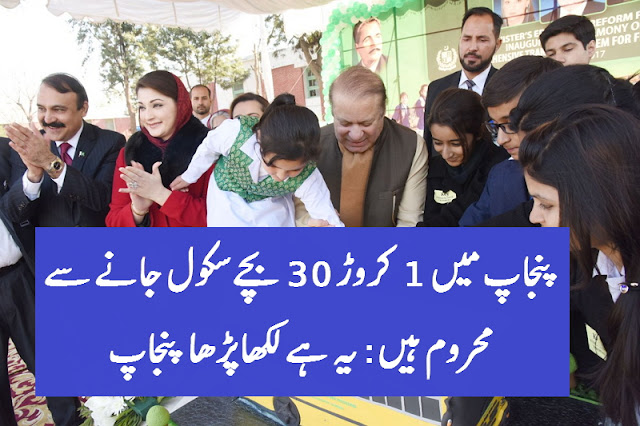LAHORE:
“Despite a marked improvement in education delivery in the last decade, Punjab still faces a huge educational challenge with 13 million children out of schools,” said Engr Qamar-ul-Islam Raja, provincial lawmaker and chairman of the Standing Committee on Education.
He was speaking at the launch of a research report, ‘Public Financing of Education in Punjab’ organised by the Institute of Social and Policy Sciences (I-SAPS) at a hotel on Wednesday. Bushra Anjum Butt, provincial lawmaker and member of the Standing Committee on Education, and Qaiser Rashid, deputy secretary for planning and budget at the Punjab School Education, were in attendance.
“According to the latest Pakistan Economic Survey, Punjab has now the highest net primary enrolment, gender parity index and literacy rate in Pakistan,” said Engr Raja. “However, there still exists a number of challenges faced by education sector in Punjab, which we are resolute to overcome”, he said. Not only 13 million children of ages between five and 16 years are out of school, said Abdullah Alam, lead researcher at I-SAPS, but also the ones studying in schools are not learning as expected.
“All these challenges are significantly linked with the magnitude of available financing and more importantly the efficiency in use of these resources,” said Alam, explaining that I-SAPS, through its perpetual analysis reports on public financing of education in Pakistan, has been serving as a watchdog to stimulate policy response for enhancing effectiveness in education budget spending. Alam, while highlighting the significant issues and achievements in public financing of education in Punjab said that around 20 per cent of the total provincial budget this year (FY 2015-16) has been earmarked for education. In the last six years, education budget of Punjab has increased from Rs. 155 billion in 2010-11 to Rs. 287 billion in 2015-16. Considering the need of additional schools and classrooms and provision of basic facilities in the schools, the development budget of Punjab has also been increased by 136 percent in the last 6 years. A significant budget of Rs. 4.45 billion has been allocated for teacher education in 2015-16.
Punjab launched a Non-Salary Budget scheme in 9 districts of the province in 2013-14 with an allocation of Rs 3.5 billion. This year, in 2015-16, a budget of Rs 14 billion has been allocated for the scheme to cover all the 36 districts of the province. Under the scheme, many schools are provided funds in the range of Rs. 0.1-1 million per annum.
Highlighting the issues, he said, despite the increase in education budgets, its share in the total provincial budget has decreased over the last 3 years. In 2013-14, 26 percent of the provincial budget was allocated for education while this year, the share has been reduced to 20 percent of the provincial budget of Punjab. Allocated budget for education is not utilised in full. During the last fiscal year 2014-15, 18 percent of the budget remained unutilised pointing towards absorption issues. Although there has been a significant increase in the funds allocated for development purposes, the expensed development budget has always been lesser than the allocated budget throughout the last 6 years.
In 2014-15, Rs. 39 billion was earmarked for development budget presenting a share of 15 percent in the total education budget. However, only 46 percent of the development could be spent during the year; constituting a mere 8 percent of the education budget. For primary education, a budget of Rs 2.5 billion (6 percent of total development budget) was allocated out of which only Rs 190 million, 8 percent of the budget, could be spent during the year.
Annual per student expenditure in Punjab has varied according to districts in 2014-15 between Rs 11,000 and Rs 19,000. While Chakwal, Rawalpindi and Bahawalpur could expense more than Rs 18,000 per student during 2014-15, districts like Chiniot and Nankana Sahib spent less than Rs 12,000 per student during the year.
The effectiveness of the allocated budget is dependent on efficient usage of allocated resources. It is essential that the government undertakes a need-based budgeting approach where districts with higher needs are allocated higher budgets.
The overall share of development budget and non-salary budget in the education budgets should be increased. The utilisation of earmarked funds needs to be ensured. Local governments should be empowered to monitor and plan utilisation of education budgets, especially the non-salary and development budgets.
The standing committee on education and public accounts committees should be allowed to take up the business on their own. This essentially would allow them to engage in scrutiny of particular issues of efficiency and best value for money highlighted in media or research reports.

إرسال تعليق